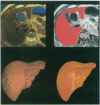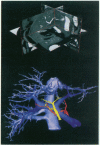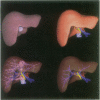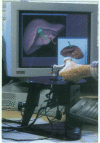Abstract
OBJECTIVE: This article describes a preliminary work on virtual reality applied to liver surgery and discusses the repercussions of assisted surgical strategy and surgical simulation on tomorrow's surgery. SUMMARY BACKGROUND DATA: Liver surgery is considered difficult because of the complexity and variability of the organ. Common generic tools for presurgical medical image visualization do not fulfill the requirements for the liver, restricting comprehension of a patient's specific liver anatomy. METHODS: Using data from the National Library of Medicine, a realistic three-dimensional image was created, including the envelope and the four internal arborescences. A computer interface was developed to manipulate the organ and to define surgical resection planes according to internal anatomy. The first step of surgical simulation was implemented, providing the organ with real-time deformation computation. RESULTS: The three-dimensional anatomy of the liver could be clearly visualized. The virtual organ could be manipulated and a resection defined depending on the anatomic relations between the arborescences, the tumor, and the external envelope. The resulting parts could also be visualized and manipulated. The simulation allowed the deformation of a liver model in real time by means of a realistic laparoscopic tool. CONCLUSIONS: Three-dimensional visualization of the organ in relation to the pathology is of great help to appreciate the complex anatomy of the liver. Using virtual reality concepts (navigation, interaction, and immersion), surgical planning, training, and teaching for this complex surgical procedure may be possible. The ability to practice a given gesture repeatedly will revolutionize surgical training, and the combination of surgical planning and simulation will improve the efficiency of intervention, leading to optimal care delivery.
Full text
PDF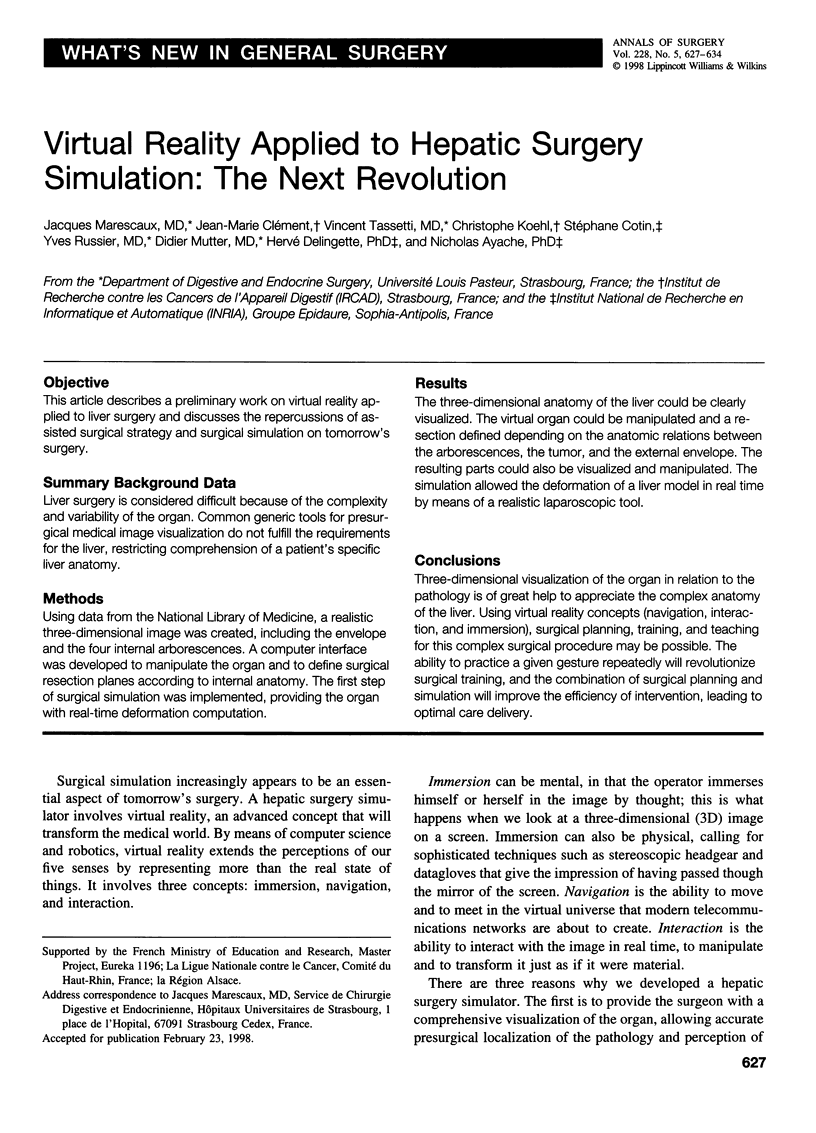
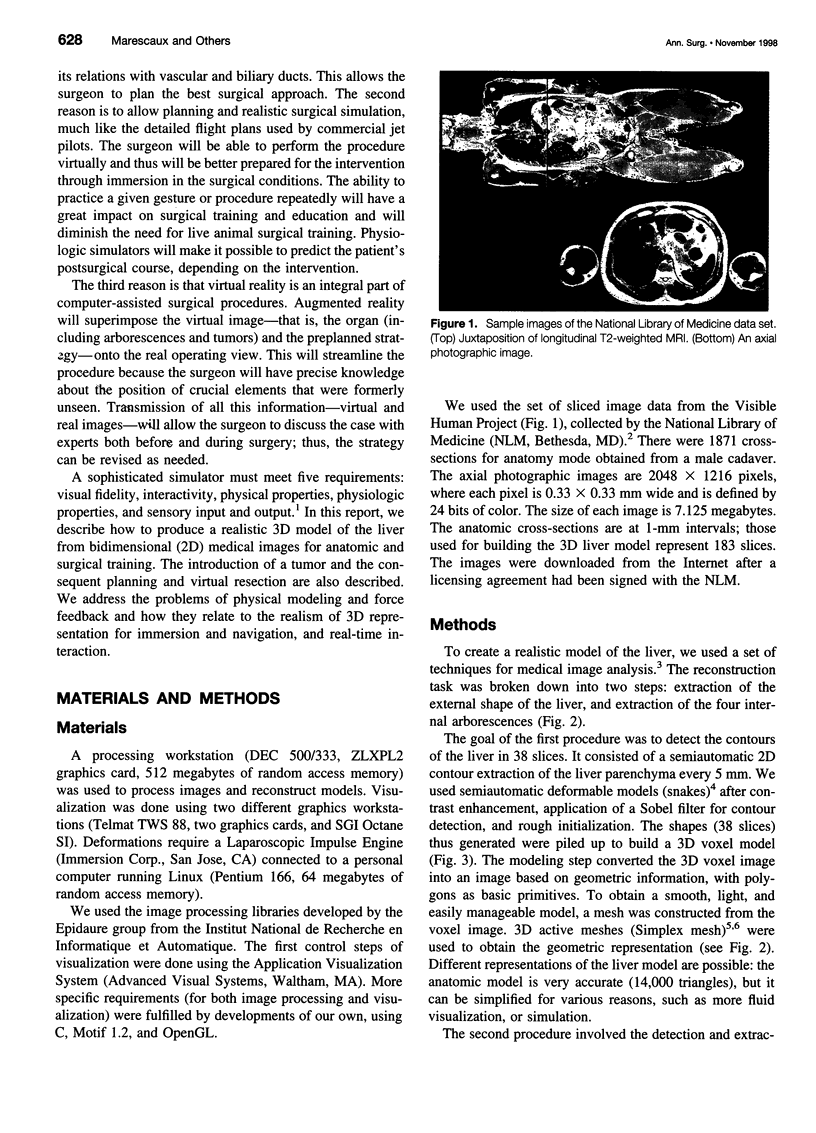
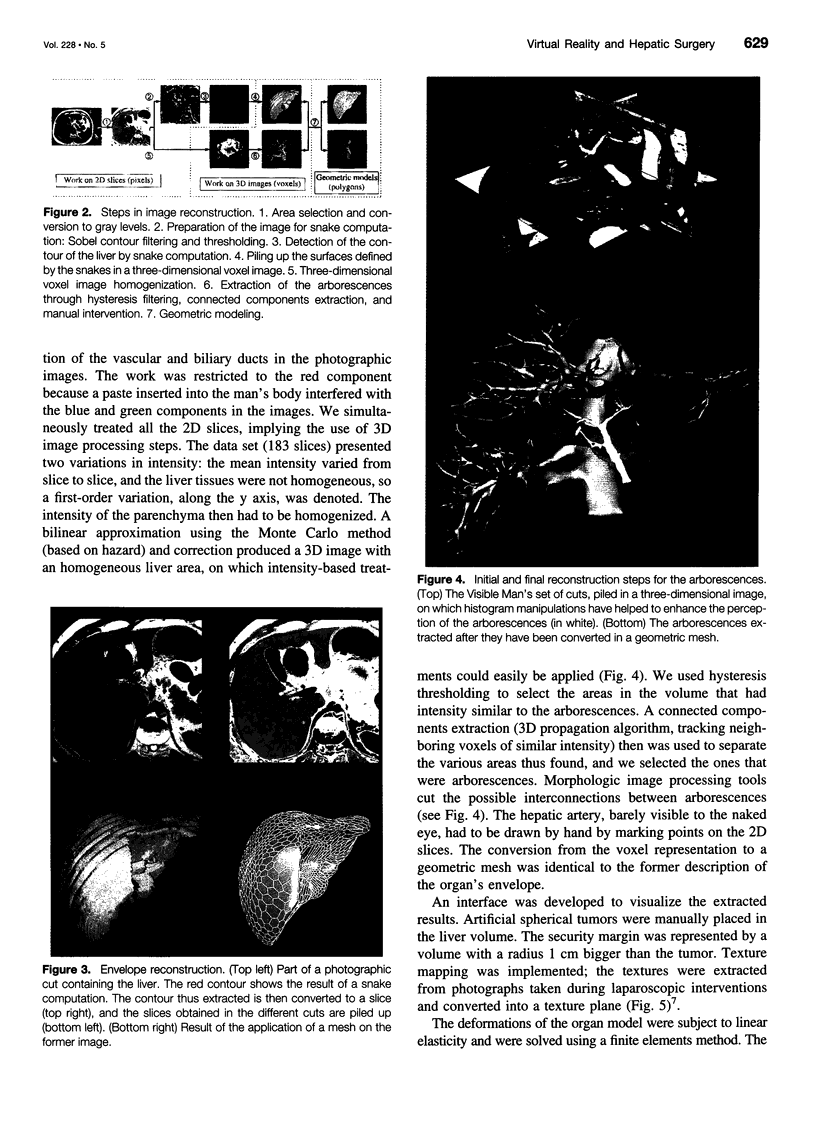

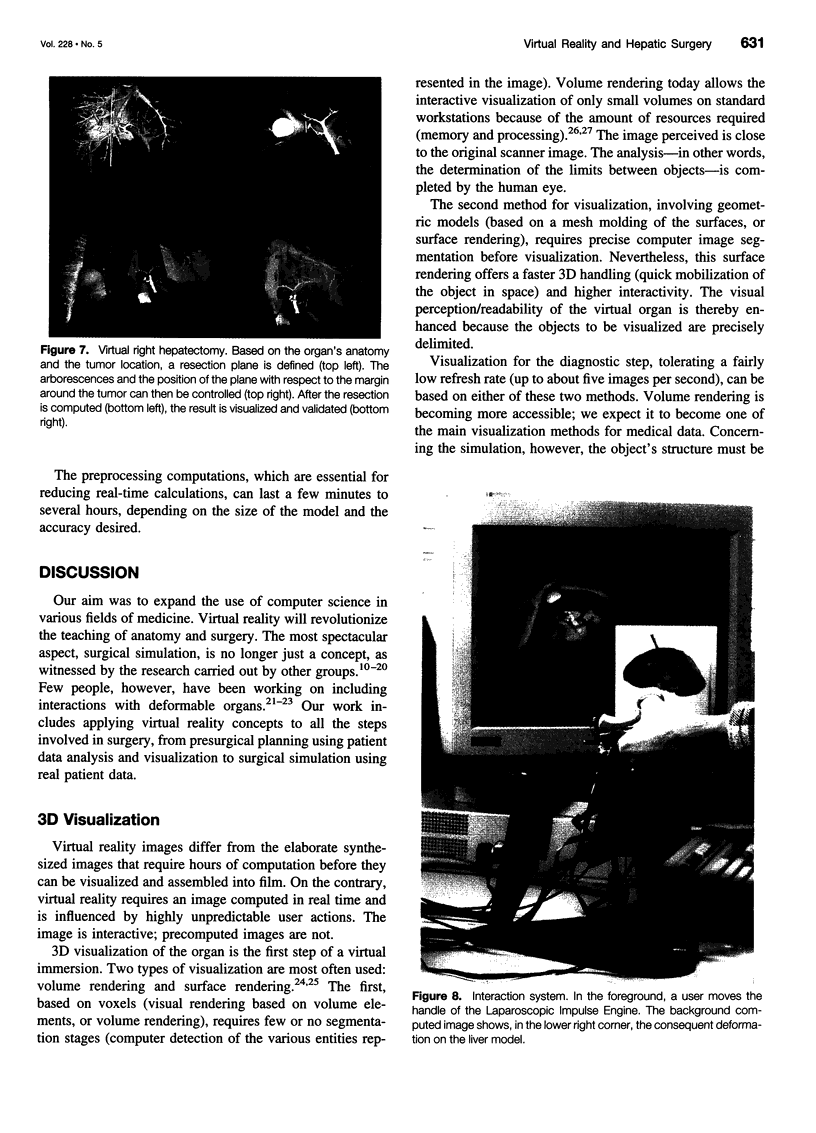

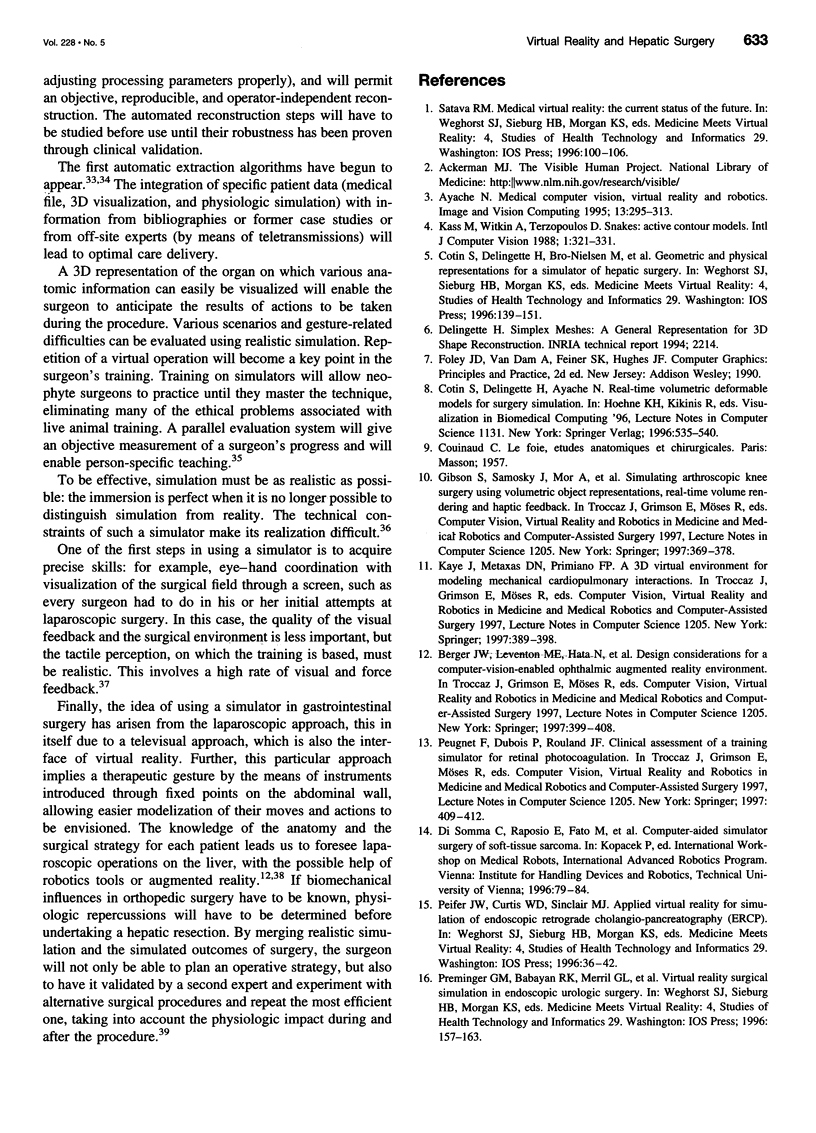
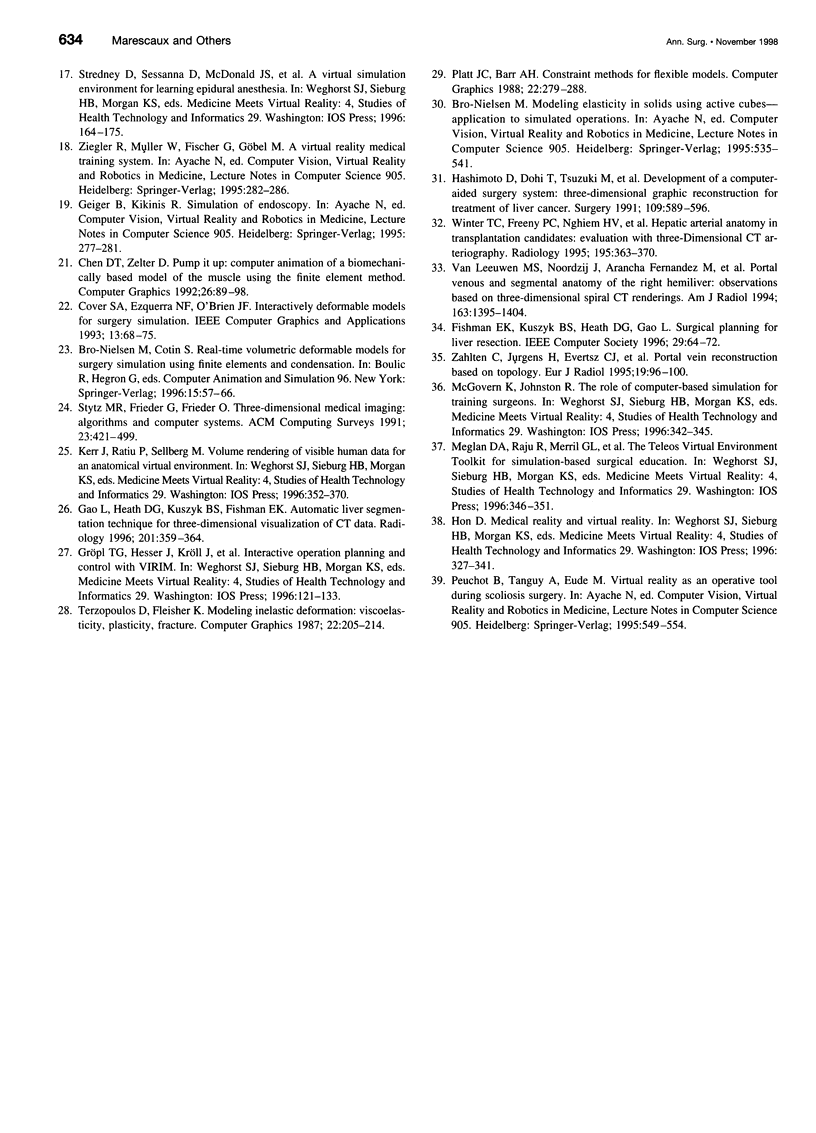
Images in this article
Selected References
These references are in PubMed. This may not be the complete list of references from this article.
- Cotin S., Delingette H., Bro-Nielsen M., Ayache N., Clément J. M., Tassetti V., Marescaux J. Geometric and physical representations for a simulator of hepatic surgery. Stud Health Technol Inform. 1996;29:139–151. [PubMed] [Google Scholar]
- Gao L., Heath D. G., Kuszyk B. S., Fishman E. K. Automatic liver segmentation technique for three-dimensional visualization of CT data. Radiology. 1996 Nov;201(2):359–364. doi: 10.1148/radiology.201.2.8888223. [DOI] [PubMed] [Google Scholar]
- Gröpl T. G., Hesser J., Kröll J., Männer R., Poliwoda C., Reinhart C., Hassfeld S., Jäger W., Quien N., Simon J. Interactive operation planning and control with VIRIM. Stud Health Technol Inform. 1996;29:121–133. [PubMed] [Google Scholar]
- Hashimoto D., Dohi T., Tsuzuki M., Horiuchi T., Ohta Y., Chinzei K., Suzuki M., Idezuki Y. Development of a computer-aided surgery system: three-dimensional graphic reconstruction for treatment of liver cancer. Surgery. 1991 May;109(5):589–596. [PubMed] [Google Scholar]
- Kerr J., Ratiu P., Sellberg M. Volume rendering of visible human data for an anatomical virtual environment. Stud Health Technol Inform. 1996;29:352–370. [PubMed] [Google Scholar]
- McGovern K., Johnston R. The role of computer-based simulation for training surgeons. Stud Health Technol Inform. 1996;29:342–345. [PubMed] [Google Scholar]
- Meglan D. A., Raju R., Merril G. L., Merril J. R., Nguyen B. H., Swamy S. N., Higgins G. A. The teleos virtual environment toolkit for simulation-based surgical education. Stud Health Technol Inform. 1996;29:346–351. [PubMed] [Google Scholar]
- Peifer J. W., Curtis W. D., Sinclair M. J. Applied virtual reality for simulation of endoscopic retrograde cholangio-pancreatography (ERCP). Stud Health Technol Inform. 1996;29:36–42. [PubMed] [Google Scholar]
- Preminger G. M., Babayan R. K., Merril G. L., Raju R., Millman A., Merril J. R. Virtual reality surgical simulation in endoscopic urologic surgery. Stud Health Technol Inform. 1996;29:157–163. [PubMed] [Google Scholar]
- Stredney D., Sessanna D., McDonald J. S., Hiemenz L., Rosenberg L. B. A virtual simulation environment for learning epidural anesthesia. Stud Health Technol Inform. 1996;29:164–175. [PubMed] [Google Scholar]
- Winter T. C., 3rd, Freeny P. C., Nghiem H. V., Hommeyer S. C., Barr D., Croghan A. M., Coldwell D. M., Althaus S. J., Mack L. A. Hepatic arterial anatomy in transplantation candidates: evaluation with three-dimensional CT arteriography. Radiology. 1995 May;195(2):363–370. doi: 10.1148/radiology.195.2.7724754. [DOI] [PubMed] [Google Scholar]
- Zahlten C., Jürgens H., Evertsz C. J., Leppek R., Peitgen H. O., Klose K. J. Portal vein reconstruction based on topology. Eur J Radiol. 1995 Jan;19(2):96–100. doi: 10.1016/0720-048x(94)00578-z. [DOI] [PubMed] [Google Scholar]
- van Leeuwen M. S., Noordzij J., Fernandez M. A., Hennipman A., Feldberg M. A., Dillon E. H. Portal venous and segmental anatomy of the right hemiliver: observations based on three-dimensional spiral CT renderings. AJR Am J Roentgenol. 1994 Dec;163(6):1395–1404. doi: 10.2214/ajr.163.6.7992736. [DOI] [PubMed] [Google Scholar]





